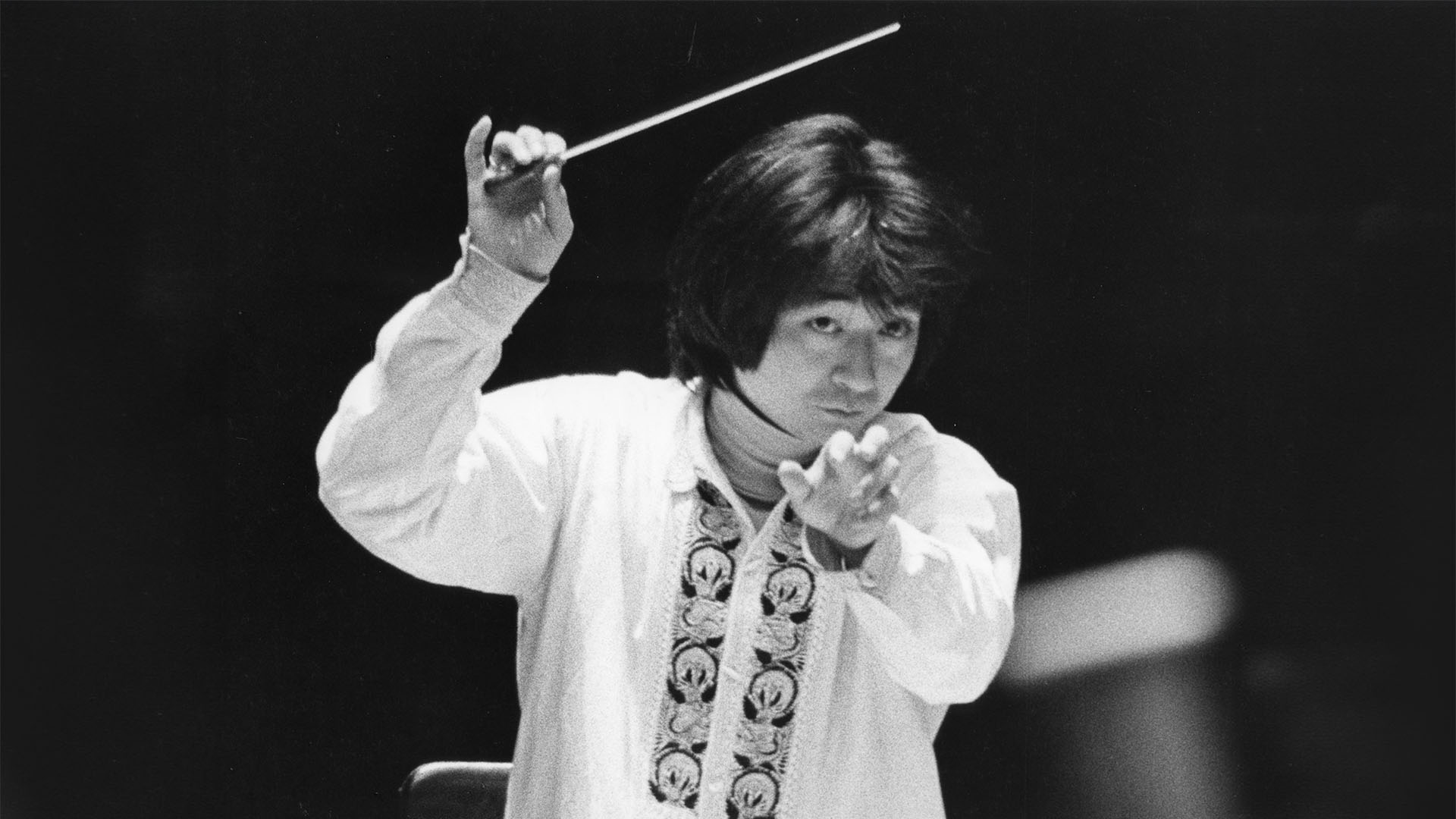REMEMBERING SEIJI OZAWA
1935–2024
ARTICLES & INTERVIEWS
These Symphony-commissioned feature articles offer insights into the music you’ll hear in the concert hall.
Mar 1, 2024

Seiji Ozawa conducted his first North American concert with the San Francisco Symphony. It was 1962 and he was 27. With his close-cropped hair, white tie and tux, he looked a far cry from the glamorous figure he would become by the time he began as SF Symphony Music Director: the thick mane spilling over his ears, the concert attire of turtlenecks and love beads, the Nehru jacket—all part of a look perfect for the time: 1970. Three years after the summer of love, he found himself a celebrity in a city in love with him. The vital energy that drew crowds to his concerts in the ’70s was still on display four decades later, when he returned to the San Francisco Symphony podium to mark the 40th anniversary of his debut on this continent.
Seiji Ozawa, who died on February 6 at age 88, was born in Northeast China to Japanese parents and grew up in Japan. As a student, he won conducting competitions in France and at Tanglewood, studied with Herbert von Karajan, then became Leonard Bernstein’s assistant at the New York Philharmonic. When San Francisco courted him for its top musical post, he was already serving as music director of the Ravinia Festival and of the Toronto Symphony.
His first San Francisco Symphony season suggested a new beginning, an appeal as contemporary as his appearance. Day-Glo posters announced his arrival. Ticket sales soared. Audiences adored him, as did musicians. (His beat exhibited “not an inkling of flabbiness or indecisiveness,” said one. Another, describing how Ozawa danced the complex rhythms of Stravinsky’s Le Sacre du printemps, maintained that playing that music “was never so easy.”)
Recording in San Francisco revived under Ozawa. Contracts were signed with Deutsche Grammophon and Phillips, and the orchestra made its first records in more than a decade, committing classics to disc as well as new music such as William Russo’s Three Pieces for Blues Band and Orchestra, an LP so popular that DG released a movement of the work as its first-ever 45 RPM disc. With Ozawa the orchestra made its first European tour, in 1973, a seven-week journey that involved 30 concerts, including 12 in the Soviet Union, making the San Francisco Symphony a cultural ambassador as the Cold War waned.
Inevitably, so charismatic a figure would be courted by others, so it was hardly a surprise when Ozawa agreed to divide his time as music director of the San Francisco Symphony and Boston Symphony Orchestra. Such a bicoastal arrangement proved hard to sustain, and in 1977 Seiji Ozawa left for Boston, where he stayed for 29 years. He continued to teach after his Boston tenure, also served as chief conductor of the Vienna State Opera and founded an opera company in Tokyo. The list of his honors is pages-long. With author Haruki Murakami, he published a book of conversations, Absolutely on Music.
With Seiji Ozawa, the San Francisco Symphony embraced music’s immediacy, the movement and muscle. One of his colleagues summed up the feeling he brought to the city: “It was fun.”
Seiji Ozawa, who died on February 6 at age 88, was born in Northeast China to Japanese parents and grew up in Japan. As a student, he won conducting competitions in France and at Tanglewood, studied with Herbert von Karajan, then became Leonard Bernstein’s assistant at the New York Philharmonic. When San Francisco courted him for its top musical post, he was already serving as music director of the Ravinia Festival and of the Toronto Symphony.
His first San Francisco Symphony season suggested a new beginning, an appeal as contemporary as his appearance. Day-Glo posters announced his arrival. Ticket sales soared. Audiences adored him, as did musicians. (His beat exhibited “not an inkling of flabbiness or indecisiveness,” said one. Another, describing how Ozawa danced the complex rhythms of Stravinsky’s Le Sacre du printemps, maintained that playing that music “was never so easy.”)
Recording in San Francisco revived under Ozawa. Contracts were signed with Deutsche Grammophon and Phillips, and the orchestra made its first records in more than a decade, committing classics to disc as well as new music such as William Russo’s Three Pieces for Blues Band and Orchestra, an LP so popular that DG released a movement of the work as its first-ever 45 RPM disc. With Ozawa the orchestra made its first European tour, in 1973, a seven-week journey that involved 30 concerts, including 12 in the Soviet Union, making the San Francisco Symphony a cultural ambassador as the Cold War waned.
Inevitably, so charismatic a figure would be courted by others, so it was hardly a surprise when Ozawa agreed to divide his time as music director of the San Francisco Symphony and Boston Symphony Orchestra. Such a bicoastal arrangement proved hard to sustain, and in 1977 Seiji Ozawa left for Boston, where he stayed for 29 years. He continued to teach after his Boston tenure, also served as chief conductor of the Vienna State Opera and founded an opera company in Tokyo. The list of his honors is pages-long. With author Haruki Murakami, he published a book of conversations, Absolutely on Music.
With Seiji Ozawa, the San Francisco Symphony embraced music’s immediacy, the movement and muscle. One of his colleagues summed up the feeling he brought to the city: “It was fun.”
